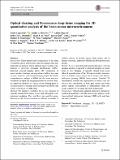| dc.contributor.author | Lagerweij, Tonny | en_US |
| dc.contributor.author | Dusoswa, Sophie A. | en_US |
| dc.contributor.author | Negrean, Adrian | en_US |
| dc.contributor.author | Hendrikx, Esther M. L. | en_US |
| dc.contributor.author | de Vries, Helga E. | en_US |
| dc.contributor.author | Kole, Jeroen | en_US |
| dc.contributor.author | Garcia-Vallejo, Juan J. | en_US |
| dc.contributor.author | Mansvelder, Huibert D. | en_US |
| dc.contributor.author | Vandertop, W. Peter | en_US |
| dc.contributor.author | Noske, David P. | en_US |
| dc.contributor.author | Tannous, Bakhos A. | en_US |
| dc.contributor.author | Musters, René J. P. | en_US |
| dc.contributor.author | van Kooyk, Yvette | en_US |
| dc.contributor.author | Wesseling, Pieter | en_US |
| dc.contributor.author | Zhao, Xi Wen | en_US |
| dc.contributor.author | Wurdinger, Thomas | en_US |
| dc.date.accessioned | 2017-12-06T16:18:11Z | |
| dc.date.issued | 2017 | en_US |
| dc.identifier.citation | Lagerweij, T., S. A. Dusoswa, A. Negrean, E. M. L. Hendrikx, H. E. de Vries, J. Kole, J. J. Garcia-Vallejo, et al. 2017. “Optical clearing and fluorescence deep-tissue imaging for 3D quantitative analysis of the brain tumor microenvironment.” Angiogenesis 20 (4): 533-546. doi:10.1007/s10456-017-9565-6. http://dx.doi.org/10.1007/s10456-017-9565-6. | en |
| dc.identifier.issn | | en |
| dc.identifier.uri | http://nrs.harvard.edu/urn-3:HUL.InstRepos:34493072 | |
| dc.description.abstract | Background: Three-dimensional visualization of the brain vasculature and its interactions with surrounding cells may shed light on diseases where aberrant microvascular organization is involved, including glioblastoma (GBM). Intravital confocal imaging allows 3D visualization of microvascular structures and migration of cells in the brain of mice, however, with limited imaging depth. To enable comprehensive analysis of GBM and the brain microenvironment, in-depth 3D imaging methods are needed. Here, we employed methods for optical tissue clearing prior to 3D microscopy to visualize the brain microvasculature and routes of invasion of GBM cells. Methods: We present a workflow for ex vivo imaging of optically cleared brain tumor tissues and subsequent computational modeling. This workflow was used for quantification of the microvasculature in relation to nuclear or cellular density in healthy mouse brain tissues and in human orthotopic, infiltrative GBM8 and E98 glioblastoma models. Results: Ex vivo cleared mouse brain tissues had a >10-fold imaging depth as compared to intravital imaging of mouse brain in vivo. Imaging of optically cleared brain tissue allowed quantification of the 3D microvascular characteristics in healthy mouse brains and in tissues with diffuse, infiltrative growing GBM8 brain tumors. Detailed 3D visualization revealed the organization of tumor cells relative to the vasculature, in both gray matter and white matter regions, and patterns of multicellular GBM networks collectively invading the brain parenchyma. Conclusions: Optical tissue clearing opens new avenues for combined quantitative and 3D microscopic analysis of the topographical relationship between GBM cells and their microenvironment. Electronic supplementary material The online version of this article (doi:10.1007/s10456-017-9565-6) contains supplementary material, which is available to authorized users. | en |
| dc.language.iso | en_US | en |
| dc.publisher | Springer Netherlands | en |
| dc.relation.isversionof | doi:10.1007/s10456-017-9565-6 | en |
| dc.relation.hasversion | http://www.ncbi.nlm.nih.gov/pmc/articles/PMC5660146/pdf/ | en |
| dash.license | LAA | en_US |
| dc.subject | Vasculature | en |
| dc.subject | Imaging | en |
| dc.subject | 3D | en |
| dc.subject | CLARITY | en |
| dc.subject | iDISCO | en |
| dc.subject | Multicellular network | en |
| dc.title | Optical clearing and fluorescence deep-tissue imaging for 3D quantitative analysis of the brain tumor microenvironment | en |
| dc.type | Journal Article | en_US |
| dc.description.version | Version of Record | en |
| dc.relation.journal | Angiogenesis | en |
| dash.depositing.author | Tannous, Bakhos A. | en_US |
| dc.date.available | 2017-12-06T16:18:11Z | |
| dc.identifier.doi | 10.1007/s10456-017-9565-6 | * |
| dash.authorsordered | false | |
| dash.contributor.affiliated | Tannous, Bakhos | |


